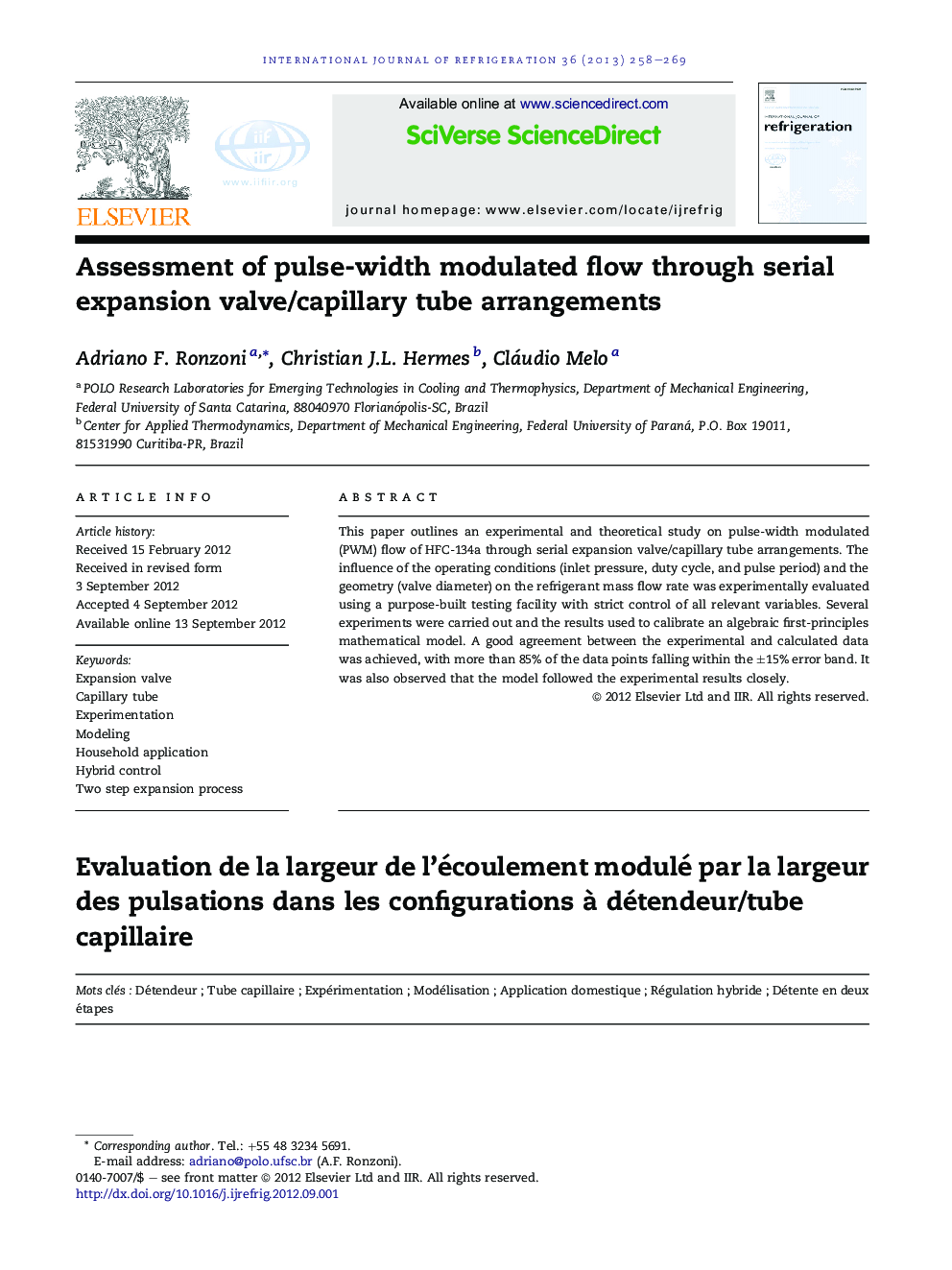| Article ID | Journal | Published Year | Pages | File Type |
|---|---|---|---|---|
| 788790 | International Journal of Refrigeration | 2013 | 12 Pages |
This paper outlines an experimental and theoretical study on pulse-width modulated (PWM) flow of HFC-134a through serial expansion valve/capillary tube arrangements. The influence of the operating conditions (inlet pressure, duty cycle, and pulse period) and the geometry (valve diameter) on the refrigerant mass flow rate was experimentally evaluated using a purpose-built testing facility with strict control of all relevant variables. Several experiments were carried out and the results used to calibrate an algebraic first-principles mathematical model. A good agreement between the experimental and calculated data was achieved, with more than 85% of the data points falling within the ±15% error band. It was also observed that the model followed the experimental results closely.
► PWM flows through serial expansion valve/capillary tube arrangements are investigated. ► The effects of operating conditions and geometry on the refrigerant mass flow rate are studied. ► A purpose-built test facility which controls all relevant variables is constructed. ► An algebraic mathematical model for pulsating capillary tube flows is devised. ► The model predicts more than 85% of the experimental data points within a ±15% error band.
